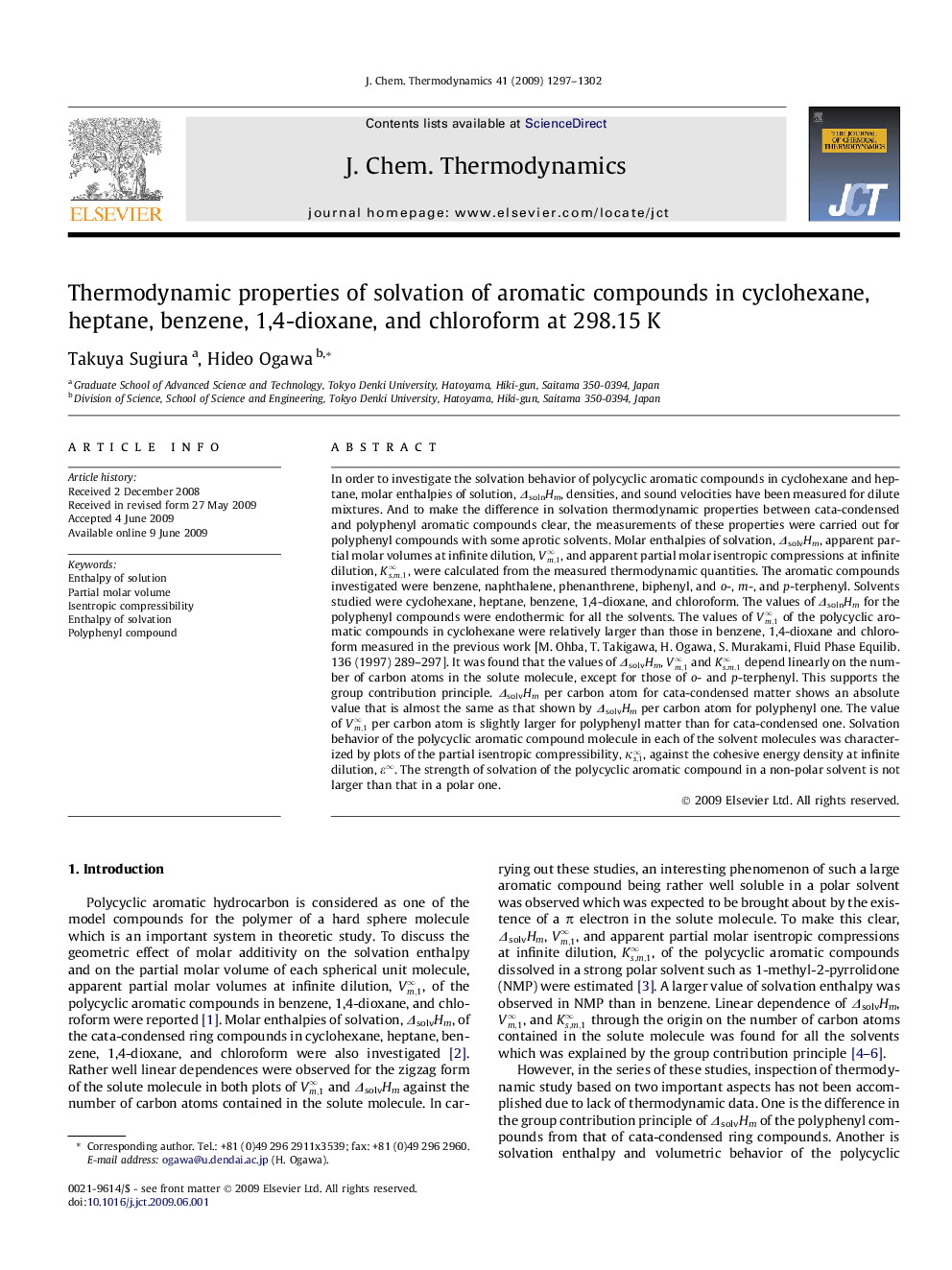| Article ID | Journal | Published Year | Pages | File Type |
|---|---|---|---|---|
| 217072 | The Journal of Chemical Thermodynamics | 2009 | 6 Pages |
In order to investigate the solvation behavior of polycyclic aromatic compounds in cyclohexane and heptane, molar enthalpies of solution, ΔsolnHm, densities, and sound velocities have been measured for dilute mixtures. And to make the difference in solvation thermodynamic properties between cata-condensed and polyphenyl aromatic compounds clear, the measurements of these properties were carried out for polyphenyl compounds with some aprotic solvents. Molar enthalpies of solvation, ΔsolvHm , apparent partial molar volumes at infinite dilution, Vm,1∞, and apparent partial molar isentropic compressions at infinite dilution, Ks,m,1∞, were calculated from the measured thermodynamic quantities. The aromatic compounds investigated were benzene, naphthalene, phenanthrene, biphenyl, and o-, m-, and p-terphenyl. Solvents studied were cyclohexane, heptane, benzene, 1,4-dioxane, and chloroform. The values of ΔsolnHm for the polyphenyl compounds were endothermic for all the solvents. The values of Vm,1∞ of the polycyclic aromatic compounds in cyclohexane were relatively larger than those in benzene, 1,4-dioxane and chloroform measured in the previous work [M. Ohba, T. Takigawa, H. Ogawa, S. Murakami, Fluid Phase Equilib. 136 (1997) 289–297]. It was found that the values of ΔsolvHm , Vm,1∞ and Ks,m,1∞ depend linearly on the number of carbon atoms in the solute molecule, except for those of o- and p-terphenyl. This supports the group contribution principle. ΔsolvHm per carbon atom for cata-condensed matter shows an absolute value that is almost the same as that shown by ΔsolvHm per carbon atom for polyphenyl one. The value of Vm,1∞ per carbon atom is slightly larger for polyphenyl matter than for cata-condensed one. Solvation behavior of the polycyclic aromatic compound molecule in each of the solvent molecules was characterized by plots of the partial isentropic compressibility, κs,1∞, against the cohesive energy density at infinite dilution, ε∞. The strength of solvation of the polycyclic aromatic compound in a non-polar solvent is not larger than that in a polar one.
